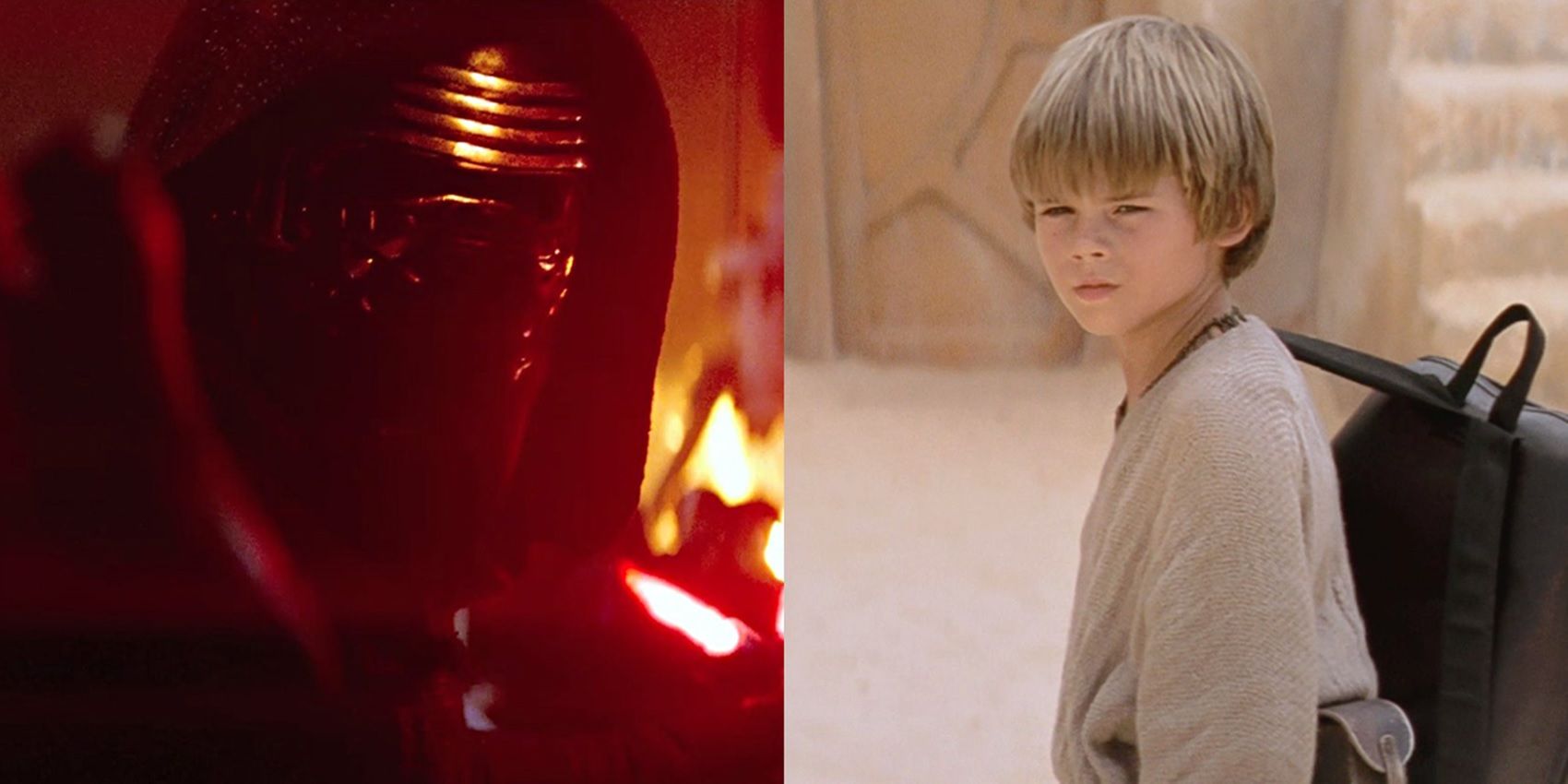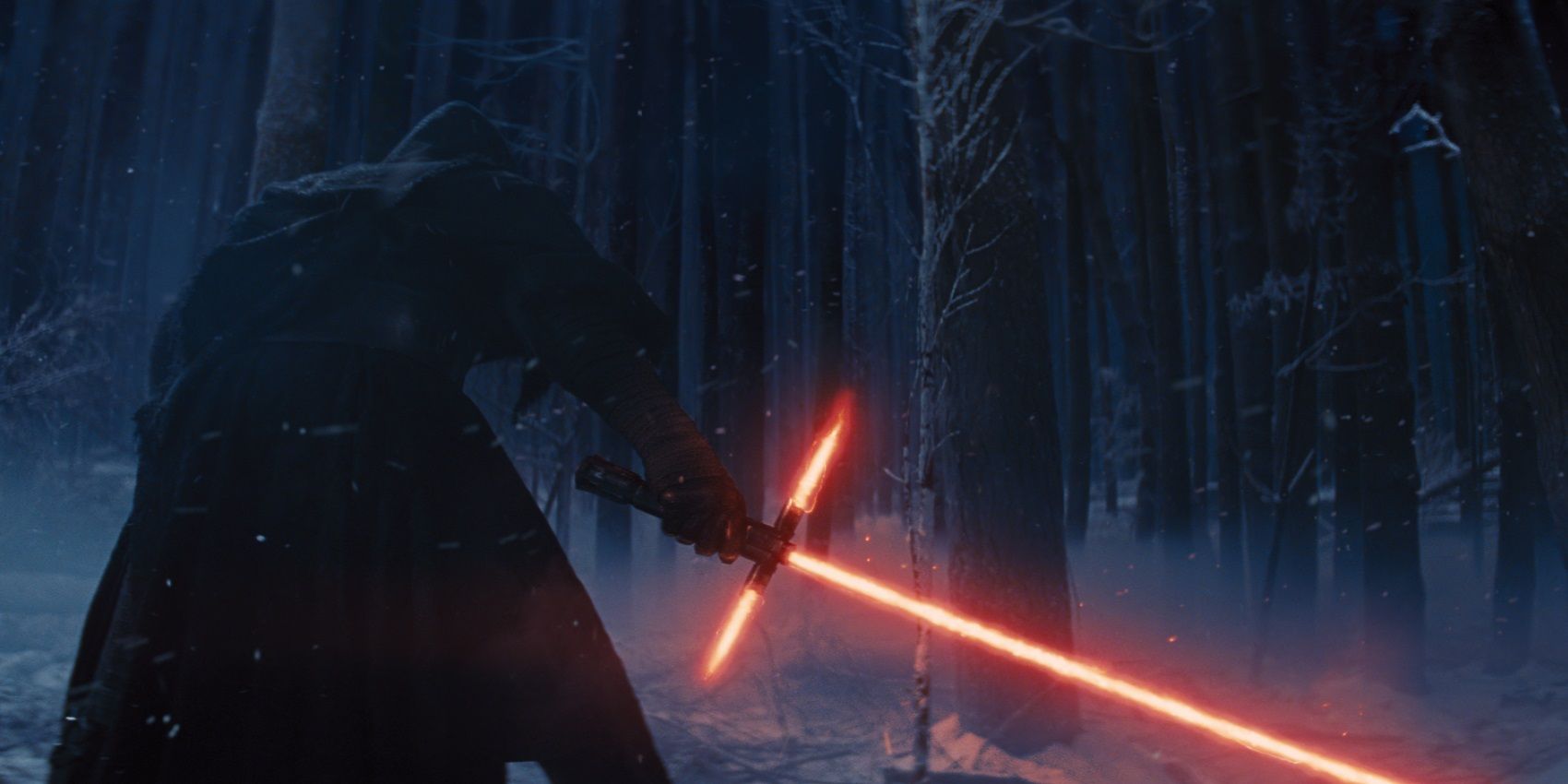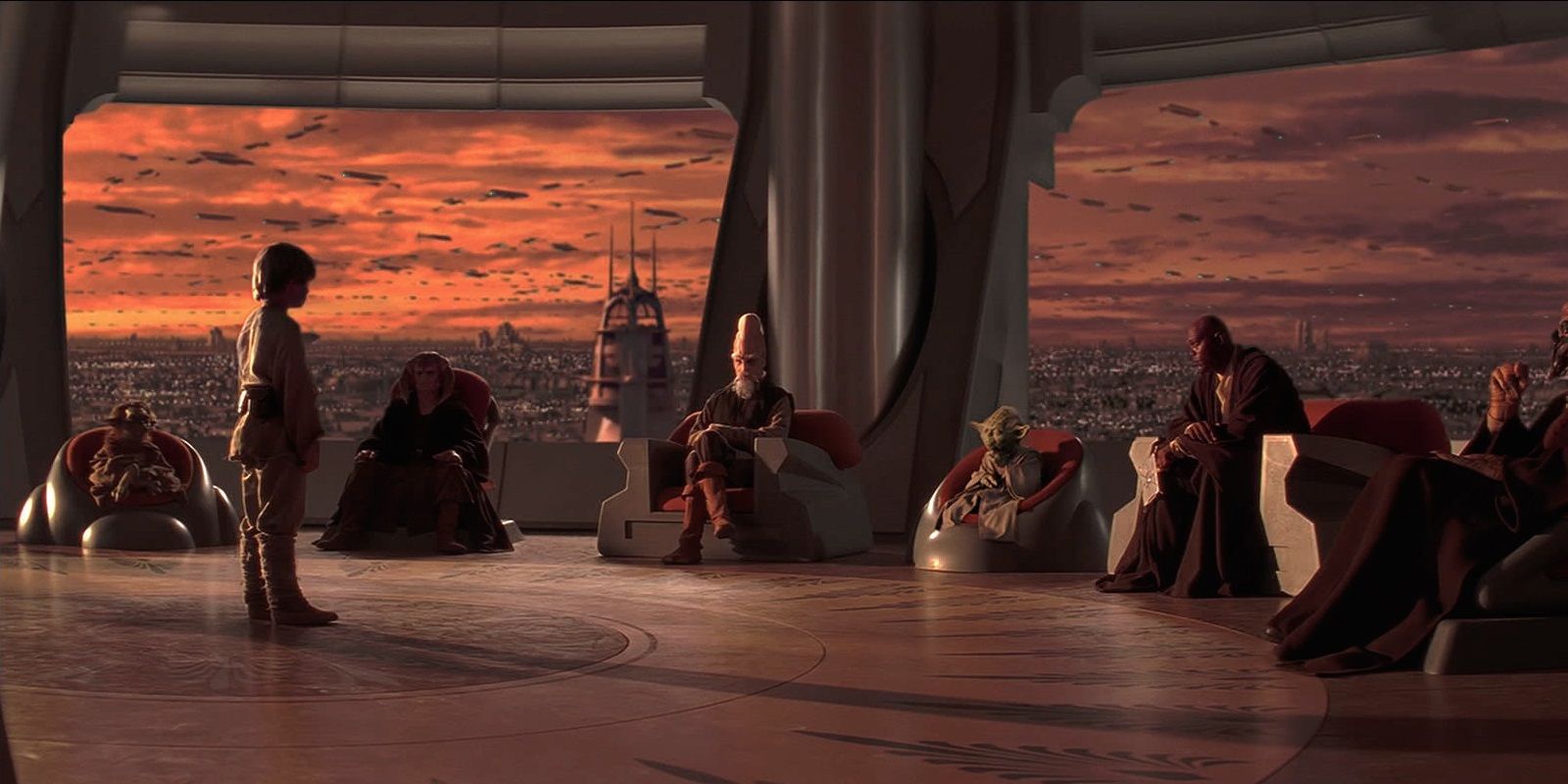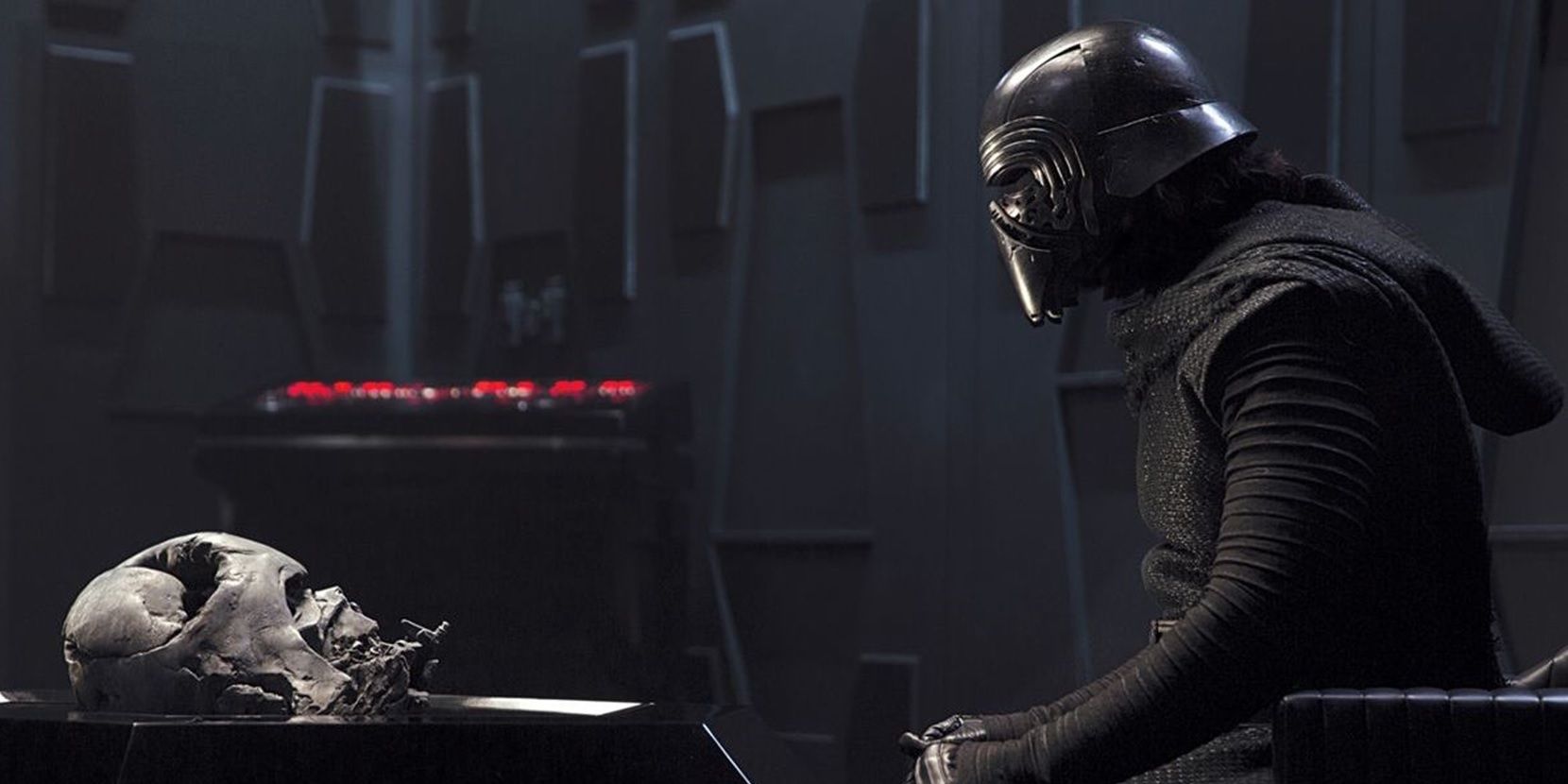
Although George Lucas always planned to turn Star Wars into a multi-part saga, he had to make the 1977 original as much as a standalone piece as possible, because there was no guarantee he’d get to make one sequel, let alone a couple of sequels and then also some prequels. When Star Wars was a global phenomenon and Lucas returned to a galaxy far, far away to fill in Vader’s backstory, there was no such worry, because 20th Century Fox executives were eager to funnel every penny they could into Lucas’ intergalactic empire.
As a result, The Phantom Menace was deliberately conceived as the first part of a trilogy. Lucas planned out all three movies accordingly, starting with a nine-year-old Anakin working as a slave on Tatooine and being hailed as a Jedi prodigy. From there, Lucas would progress to a teenage Anakin at the tail end of his Jedi training with serious emotional issues, and eventually conclude the story with an accomplished, battle-hardened Jedi apprentice turning to the dark side and ruling the galaxy with an iron fist.
RELATED: The Star Wars Sequels Failed Because Of One Big Problem Behind The Camera
Years later, after Lucas sold his studio (and, with it, control of the Star Wars franchise) to Disney, the Mouse House had a hard time finding a filmmaker willing to take on the daunting task of directing Episode VII of the Star Wars saga and kicking off the much-anticipated sequel trilogy. Regardless of how J.J. Abrams’ Star Wars movies turned out, taking that job at all is pretty impressive. Lucas left Kathleen Kennedy in charge of his company, and her plan was to hire three different filmmakers. One would make Episode VII, then another would expand on those ideas in Episode VIII, then another would build on that and wrap up all the loose ends in Episode IX.

That’s not how it ended up panning out, but that was the plan when Abrams made Episode VII. Coming up with the first part of a trilogy and then jumping ship was ideal for Abrams’ “mystery box” style of storytelling. He was free to litter Episode VII with teases like Luke Skywalker being exiled on Ahch-To or Rey hailing from a significant Force-sensitive bloodline without knowing the answers to any of the audience’s inevitable questions and leave it up to the next guy – who ended up being Rian Johnson – to explain it all.
So, like The Phantom Menace, Abrams made The Force Awakens knowing that it would be the first part of a trilogy and that the next two movies would happen no matter what, but unlike The Phantom Menace, the larger story arcs hadn’t been planned out. The most glaring differences between Episodes I and VII of the Skywalker saga seem to stem from Lucas planning out the prequels in advance and Abrams winging the sequels under the pretence that he could bail after the first movie and leave it two other filmmakers to stick the landing. Recently, Abrams admitted that this was the biggest problem with the sequel trilogy: “Having a plan, I have learned – in some cases, the hard way – is the most critical thing.”
While Abrams didn’t decide who Rey’s parents would turn out to be or how and why Supreme Leader Snoke created the First Order and turned Kylo Ren to the dark side, Lucas knew from the moment he put pen to paper that The Phantom Menace would kickstart the heartbreaking backstory of Darth Vader as a promising young Jedi who gets manipulated by an evil puppet-master.

Like all the greatest prequels, The Phantom Menace uses the inevitability of fate as a poignant dramatic tool. Star Wars fans went in knowing that Anakin Skywalker would eventually become Darth Vader – the most evil man in the galaxy until his son brought out the good in him – so a cutesy nine-year-old podracer offered a sharp juxtaposition. Contemporary fans responded as viciously to the prequels as today’s fans have responded to Disney’s sequels, and not everybody took to Jake Lloyd’s innocent portrayal of young Anakin. But in retrospect, Lloyd brilliantly captured Anakin’s sweet, innocent, kind-hearted early nature, evoking Luke’s introduction as a bright-eyed farm boy in the original movie. This set the stage for Anakin’s tragic downfall later in the trilogy.
Abrams’ setup for the sequel trilogy borrowed a lot from Anakin’s story, but it skipped to the very end. When Episode VII begins, Han and Leia’s son has already turned to the dark side, destroyed Luke’s Jedi academy, and brought the Empire back. It might’ve been more effective to actually cover this crucial part of the story instead of doling it out in brief flashbacks and leaving it up to Lucasfilm’s Twitter feed to fill in everything else.
One of the biggest disappointments about The Force Awakens is that it disregards Return of the Jedi’s setups and reverts the galaxy back to Imperial rule without explanation. The original trilogy set up the Rebellion to become the New Republic and Luke to rebuild the Jedi Order with Leia as his first student, but the sequels ignored all that for the purposes of nostalgia-baiting with a loose remake of the original movie.
There was no need to rush into the First Order’s rule. The Phantom Menace started the prequel trilogy with Anakin as a little kid in a mostly peaceful world governed by democracy. This masterfully set the stage for his transformation into Darth Vader and the rise of the Empire in Episodes II and III. Episode VII should’ve followed suit, opening with the New Republic at the height of its powers and Han and Leia raising wayward young Jedi apprentice Ben Solo.

Since The Force Awakens begins after Ben’s corruption and the massacre at Luke’s Jedi academy and the fall of the New Republic and the rise of the First Order, it feels like it skipped over a ton of juicy story material. All the backstory that exists between the original and sequel trilogies should’ve been covered on-screen in Episode VII, then Episode VIII could’ve had an Attack of the Clones-style time jump into the authoritarian hellscape ruled by Kylo Ren.
This would’ve given Rian Johnson a lot more freedom with Episode VII. Being forced to follow on directly after The Force Awakens’ cliffhanger ending meant that Johnson was essentially writing with one hand tied behind his back. The Last Jedi was forced to pick up a couple of hours after The Force Awakens, so Johnson had to fit his unique vision of the Star Wars myth into an ill-conceived setup and the B-plot was limited to a slow chase from one Resistance base to another.
MORE: Star Wars: George Lucas Wanted A Familiar Face For The Sequel Trilogy's Villain

